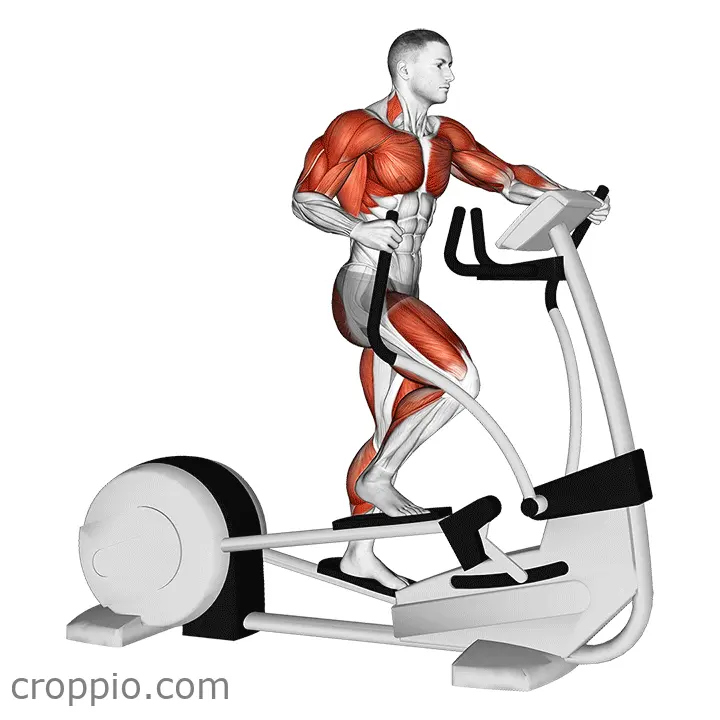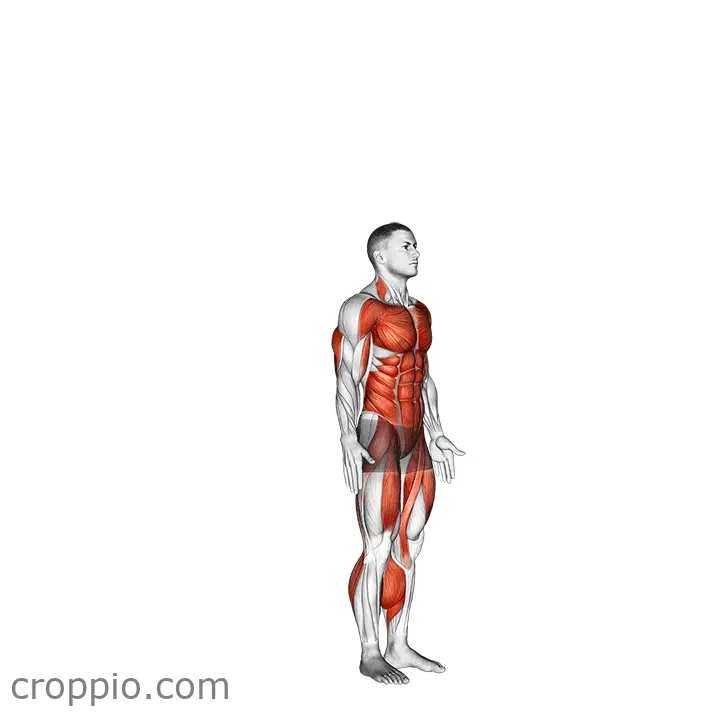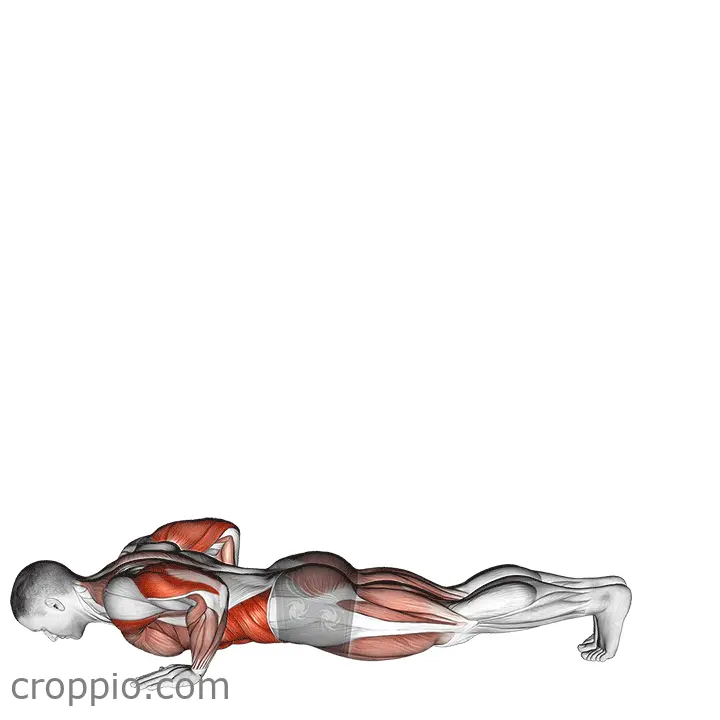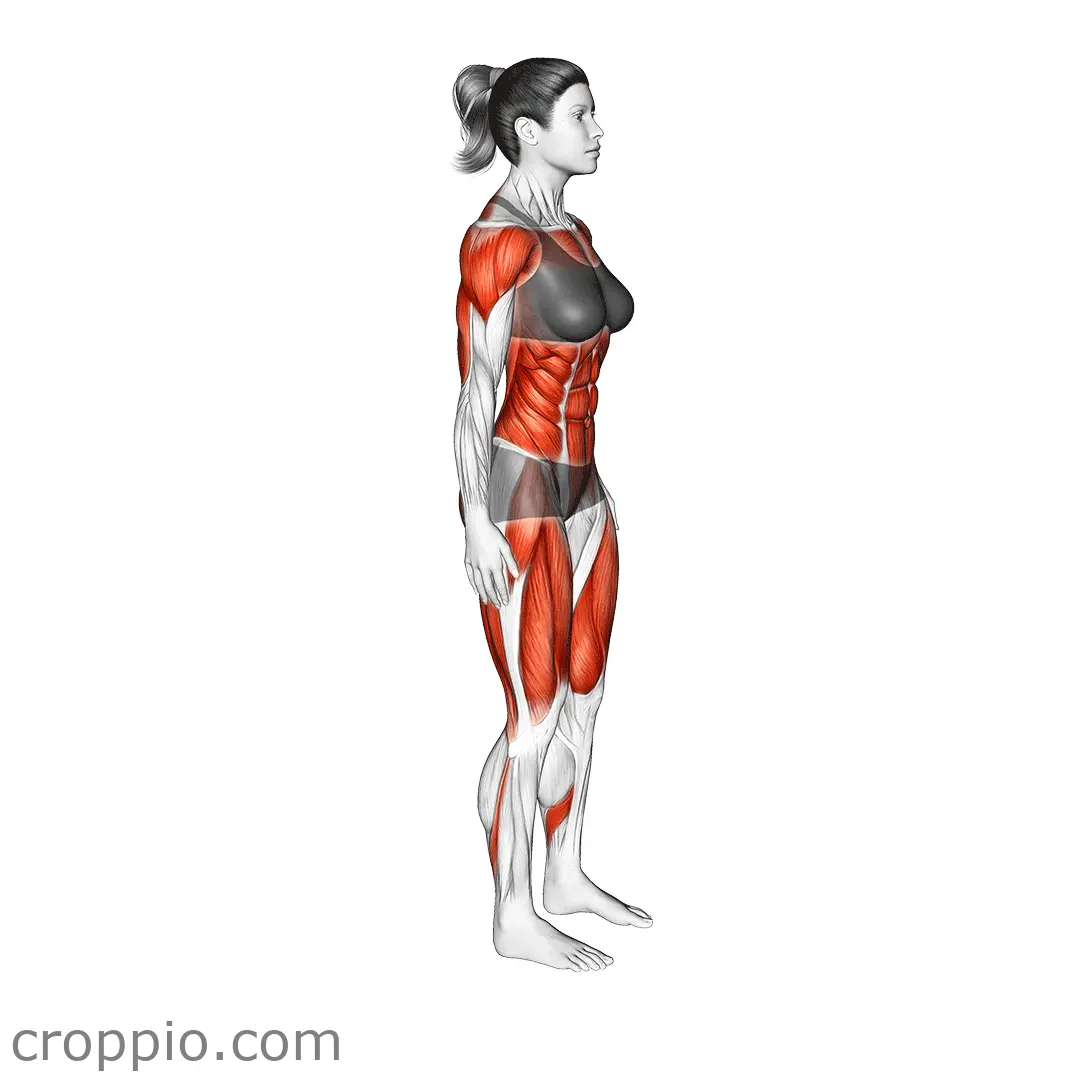Jumping Jacks
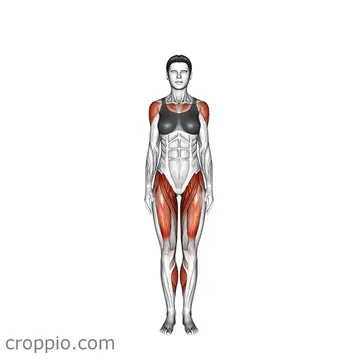
Muscles Involved
Jumping jacks are a dynamic full-body exercise that engages multiple muscle groups. The primary muscles targeted during the movement include the deltoids (shoulders), quadriceps (front of the thighs), hamstrings (back of the thighs), and calves. Additionally, the exercise requires engagement of the core muscles, specifically the rectus abdominis and obliques, to maintain balance and stability throughout the motion. Secondary muscles involved include the glutes and hip flexors, which assist in the explosive movement and lateral expansion of the legs.
Top Mistakes
- Inadequate Range of Motion: Not fully extending your arms overhead or not jumping high enough can reduce the effectiveness of the exercise.
- Poor Posture: Leaning forward or hunching the shoulders can lead to strain and decreases the benefits of the workout.
- Jumping Too Softly: A weak leap can diminish the cardiovascular benefits and fail to engage the necessary muscle groups effectively.
Execution Tips
- Start Position: Stand tall with your feet together and arms at your sides. Ensure a neutral spine and relaxed shoulders.
- Jumping Motion: Simultaneously jump your feet out to the sides while raising your arms overhead. Aim for a smooth and explosive movement.
- Landing Technique: Land softly on the balls of your feet with a slight bend in your knees to absorb the impact, which helps prevent injuries.
- Breathing: Maintain a steady breathing pattern. Inhale as you prepare for the jump and exhale as you jump and land.
Workouts
Incorporating jumping jacks into your workouts can enhance cardiovascular fitness and agility. A typical routine could consist of 3 to 4 sets of 15-30 jumping jacks with 30 seconds to 1-minute rest in between sets. They can be combined with other exercises such as push-ups, squats, or burpees for a total-body circuit. For an advanced workout, consider performing jumping jacks as part of a high-intensity interval training (HIIT) session, alternating 30 seconds of jumping jacks with 30 seconds of rest or other exercises.
Conclusion
Jumping jacks are a versatile and effective exercise suitable for individuals of all fitness levels. By engaging multiple muscle groups, they enhance muscular endurance and boost cardiovascular capacity. This simple bodyweight movement can be easily integrated into various workout routines, helping to improve overall fitness, coordination, and agility. Whether as a warm-up or a high-intensity cardio burst, jumping jacks offer numerous benefits for maintaining a healthy lifestyle.
